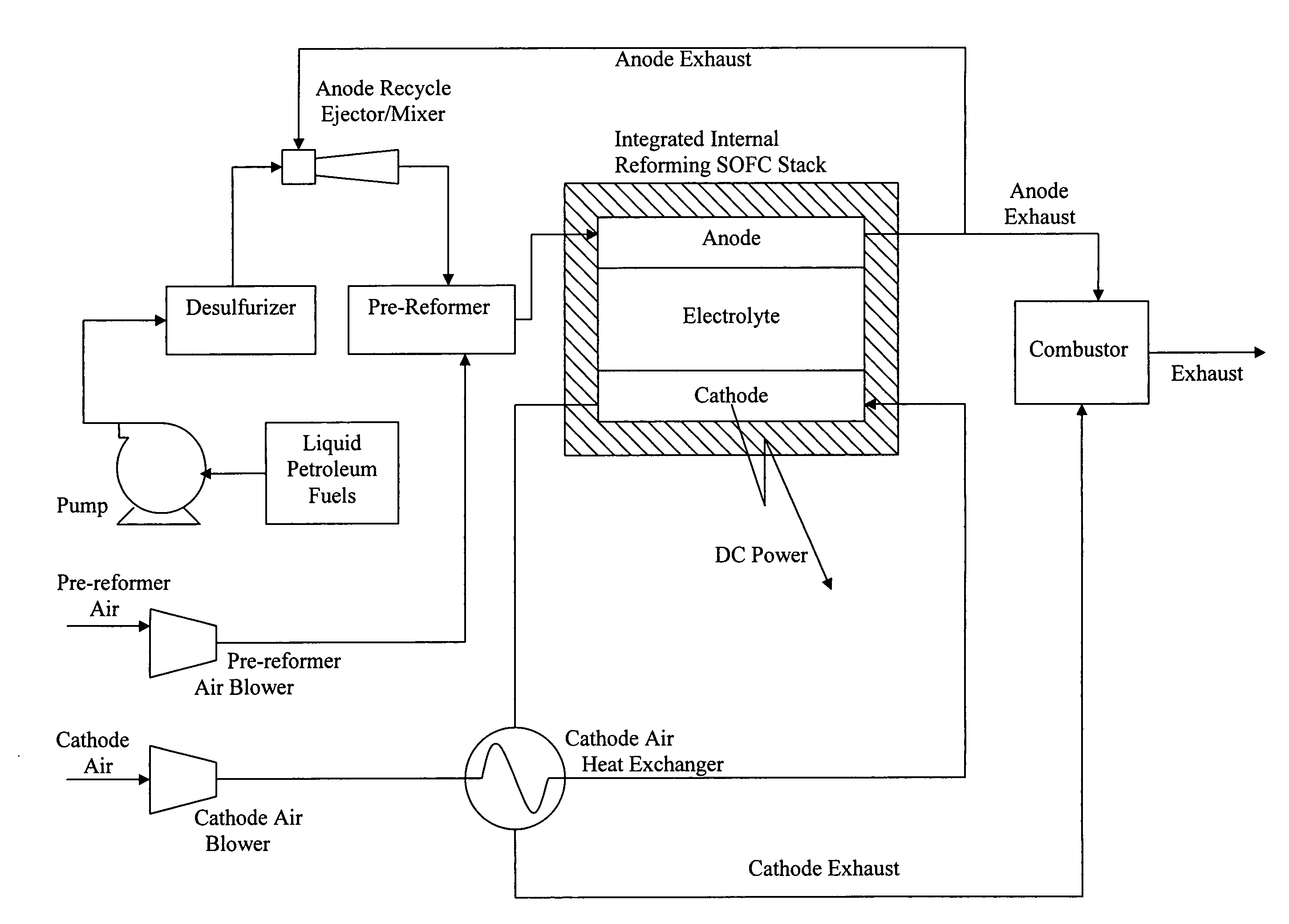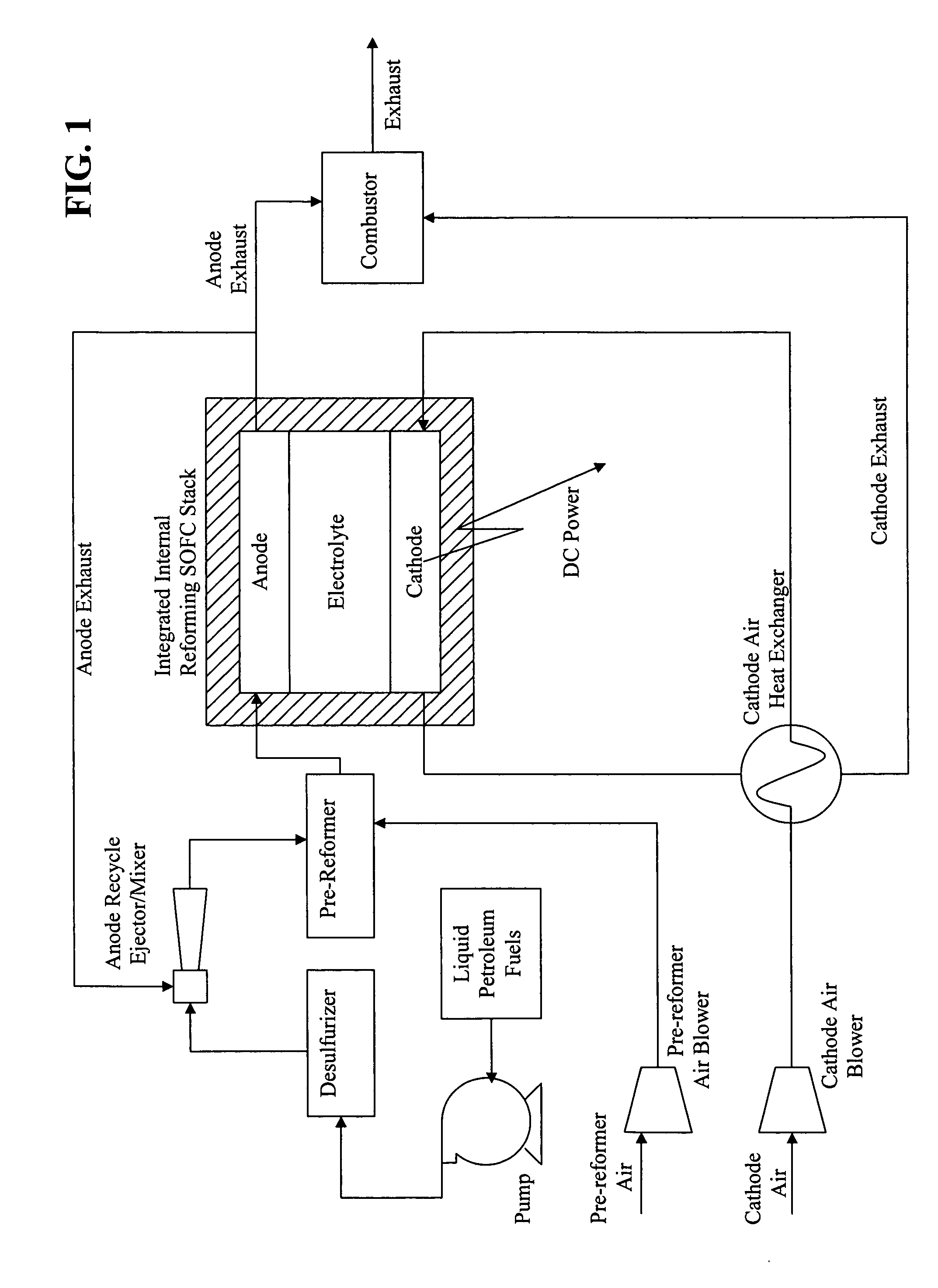Process for the conversion of oil-based liquid fuels to a fuel mixture suitable for use in solid oxide fuel cell applications
a solid oxide fuel cell and liquid fuel technology, applied in the direction of energy input, combustible gas production, electrochemical generators, etc., can solve the problems of inability to meet demanding variable load requirements, inability to maintain thermal balance under part-load conditions, and inability to meet variable load requirements. , to achieve the effect of reducing the formation of tar and carbon, superior performance of the internal reforming sofc stack
- Summary
- Abstract
- Description
- Claims
- Application Information
AI Technical Summary
Benefits of technology
Problems solved by technology
Method used
Image
Examples
Embodiment Construction
[0020]The invention is directed to processes that convert oil-based fuels to a variable mix of methane and hydrogen for solid oxide fuel cell applications. Generally, the process consists of a fuel pump, a desulfurizer, an air blower / compressor, a pre-reformer that contains noble metal catalysts, a cathode air blower / compressor, a SOFC stack, and an exhaust after-burner or combustor. The pre-reformer is essentially a chemical reactor. For large scale stationary applications, traditional scale-up methodology for chemical processes can be utilized. However, it is beneficial to consider mechanically and thermally integrating the pre-reformer with the integrated internal reforming SOFC stack for load varying applications. Examples are on-board a vehicle and domestic power generation applications in which packaging is a critical design dimension.
[0021]The product gases from the pre-reformer typically consist of CH4, H2, H2O, CO, CO2, and N2. The variability of the compositions of product...
PUM
| Property | Measurement | Unit |
|---|---|---|
| temperature | aaaaa | aaaaa |
| temperature | aaaaa | aaaaa |
| temperature | aaaaa | aaaaa |
Abstract
Description
Claims
Application Information
 Login to View More
Login to View More - R&D
- Intellectual Property
- Life Sciences
- Materials
- Tech Scout
- Unparalleled Data Quality
- Higher Quality Content
- 60% Fewer Hallucinations
Browse by: Latest US Patents, China's latest patents, Technical Efficacy Thesaurus, Application Domain, Technology Topic, Popular Technical Reports.
© 2025 PatSnap. All rights reserved.Legal|Privacy policy|Modern Slavery Act Transparency Statement|Sitemap|About US| Contact US: help@patsnap.com


